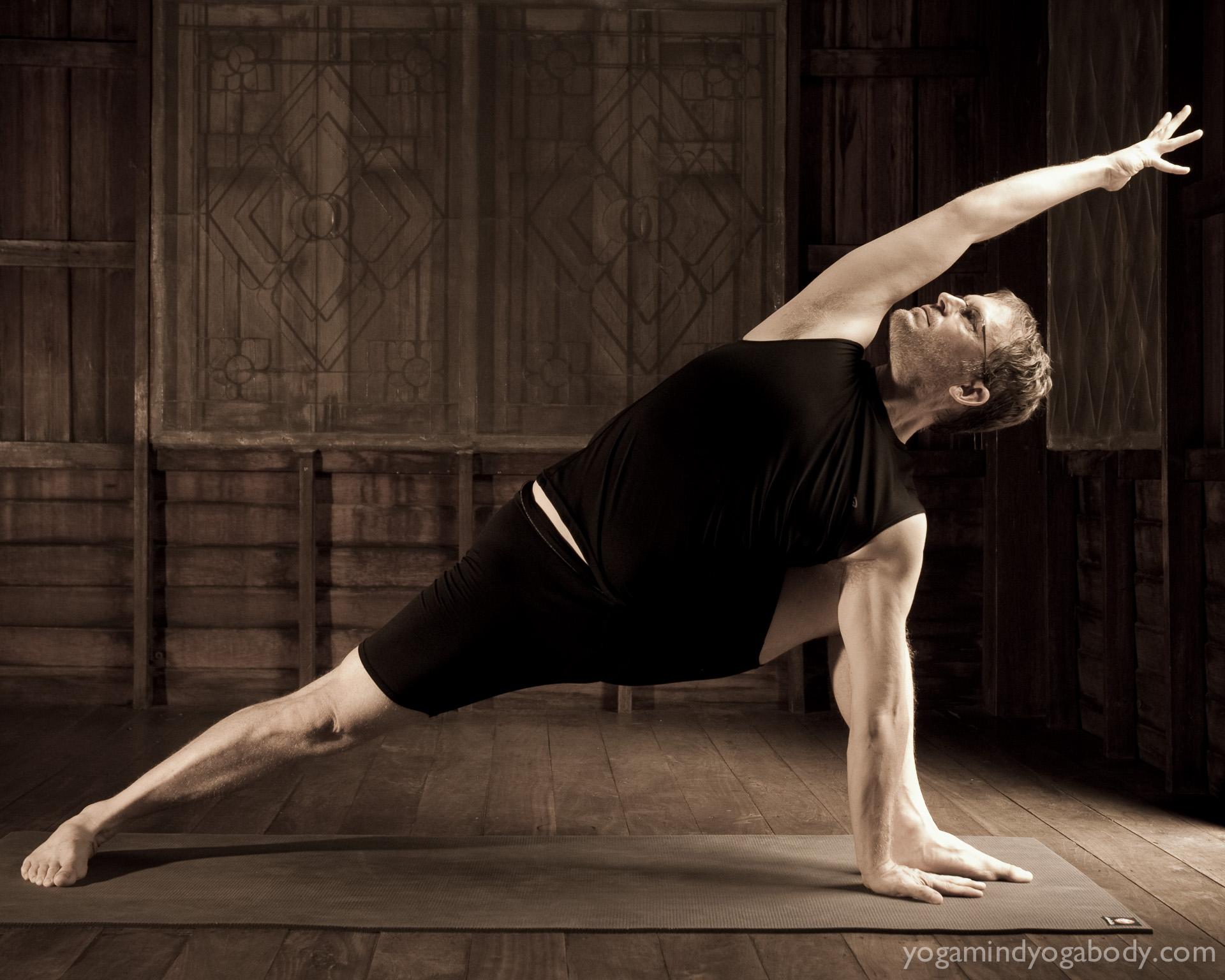When is a body shape merely a body shape, and what transforms it into an asana? From my point of view, it is the suffusion of a shape with the qualities of a free-flowing breath that transforms a shape into an asana. It is the prioritization of a spacious breath that transforms a body movement into the practice of yoga. This is what fundamentally differentiates yoga from exercise, and what gives it the power to integrate mind and body.
Why? Because making conscious the subconscious act of breathing compels the conscious mind, the subconscious, and the physical body to meaningfully engage with each other. Bringing the quality of your breath to bear on the quality of your physical movements IS the intricate dance we call asana practice.
Try it now
Stand up, place your feet more or less parallel and hip-distance apart. Close your eyes, and notice how you feel. Reach your fingertips high overhead and bring them back down a few times. Again, notice how you feel. Notice that the act of reaching your fingertips overhead can be quite independent from your breath.
Make it an asana
Then slowly become aware of your breath. Feel how the breath changes the shape of your body as you inhale and exhale. Feel the front of your chest expand and lift as you inhale. Observe the natural rounding of your upper back decrease. Feel how the front of your chest sinks slightly as you exhale. Notice how your upper back rounds a little bit more. As you deepen the breath and become more attuned to its movements, notice how the movement of the breath ripples out into your arms.
Allow the breath’s movement to extend freely into the arms, and observe how your arms move as a result of your breath. Do your inhales result in an external rotation in your arms and cause them to float up slightly? Do your exhales cause your arms to return to their neutral position, closer to the torso? Allow the movement of your arms to be exaggerated for about 20 breaths. Breathe as slowly, smoothly, deeply, yet gently as you can, without straining. Keep allowing the arm movement to be exaggerated as it emerges from the breath. Notice that eventually a full inhale floats your arms out and up. Keep repeating the arm movement, and begin to spread your awareness down into your feet as you inhale the arms up, and notice whether that creates an even more complete connection between your breath, your mind, and your entire body.
Tadasana versus standing
On the last exhale, let the arms float all the way back down. Stand with your eyes closed for a few more breaths, spreading your awareness throughout your body. Notice the difference between Tadasana, the pose you are now doing, compared to merely standing on two feet. What makes Tadasana Tadasana is not an increase in effort. Instead it is an increase in breath awareness, and a conscious but almost effortless alignment of the body that supports a free-flowing breath.






Leave A Comment